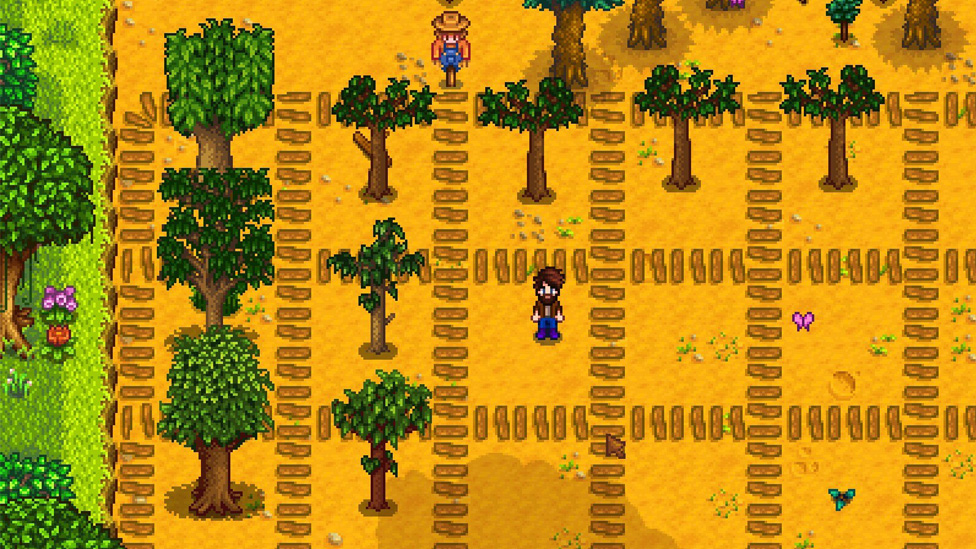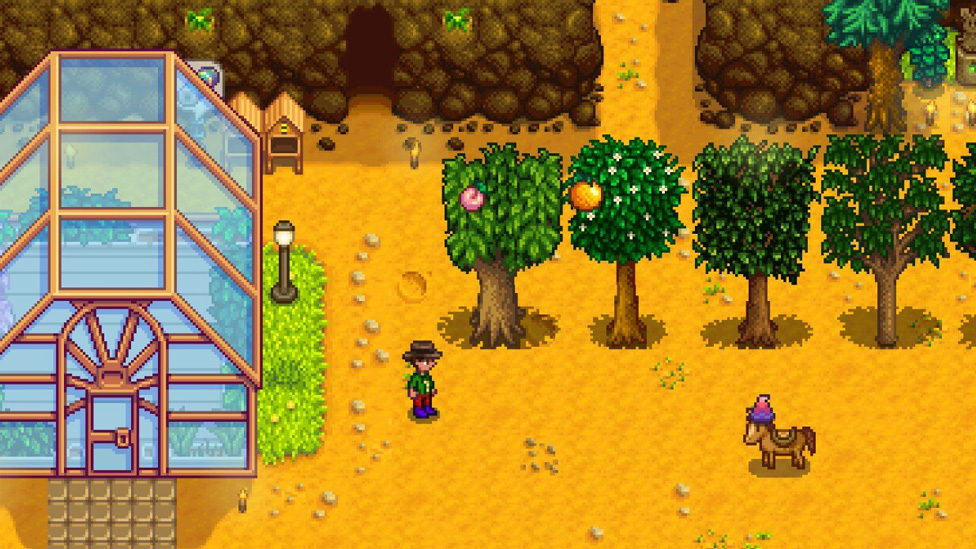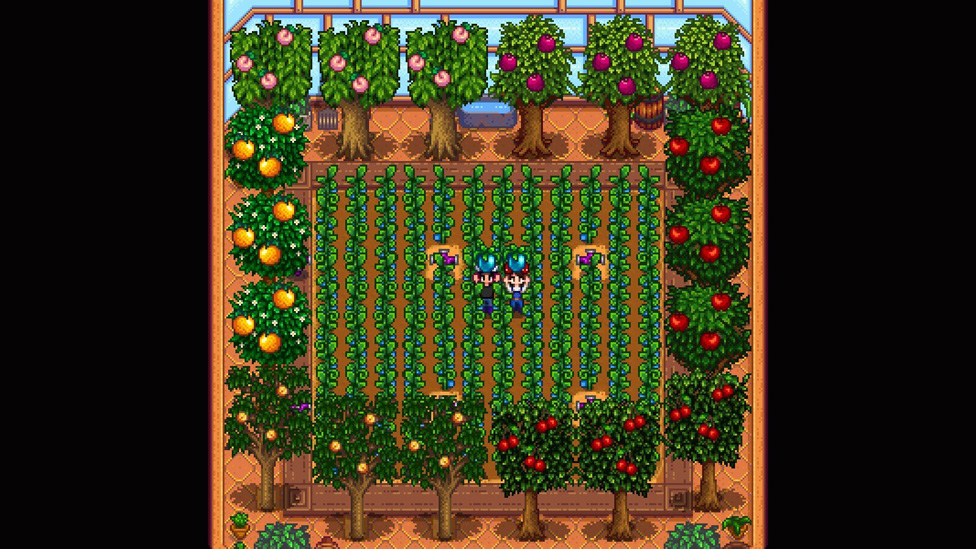Fruit Tree in Stardew Valley

Make Your Own Stardew Valley Server
What Fruit Trees are Available in Stardew Valley?
In total, there are eight different kinds of fruit trees that you can grow on your Stardew Valley farm. These are as follows:
- Apricots
- Apples
- Bananas
- Cherries
- Mangos
- Oranges
- Peaches
- Pomegranates
Fruit trees only provide fruit seasonally, as with regular crops; as such, they are seasonal. However, unlike regular crops, fruit trees must be planned in advance as they take a whole month to grow; as such, if you were to plant them at the start of the desired month, they wouldn’t reach maturity until the month was over.
Should I Grow Fruit Trees on my Stardew Valley Farm?
Growing fruit trees on your Stardew Valley farm can be well worthwhile for a number of different reasons, making them excellent plants to grow. Some of the main reasons you should consider growing fruit trees on your Stardew Valley farm include the following points:- Ease: Regular crops need frequent reseeding. In contrast, once you’ve planted and grown a fruit tree, it will continue to bear fruit when in season until it is chopped down. As such, this can represent an incredibly easy crop to grow for your farm.
- Daily Harvests: Unlike most crops, which need to grow for at least a few days before you can harvest them, fruit trees bear fruit daily. However, if you don’t feel like collecting the fruit every day, the crop can persist for several days.
- Valuable Crops: The price of most fruits makes them easily comparable to most regular crops, but with the benefit of a daily harvest. This only increases as the crops increase in quality.

Tips for Growing Stardew Valley Fruit Trees
Thus far, we’ve outlined the basics you should know about Stardew Valley fruit trees—but we’ve also got a few more tips and pointers that could help you grow these crops successfully.In Stardew Valley, Tree Spacing is Crucial
When planting your fruit tree seeds, ensuring enough space is crucial; luckily, the game should prevent you from placing seeds too close to another growing tree or patch of seeds. If the 3x3 perimeter around your fruit tree gets interrupted by debris, the tree will not grow, so this is important to keep in mind.Always Consider the Season When Planting Trees
As with other crops, fruit trees in Stardew Valley are seasonal; as a result, it’s important to consider the season carefully to ensure you will actually get a harvest. For example, there’s no point planting a tree that will yield fruit in the next season almost at the end of this one, as you’ll only get a few days worth of harvests. The only exception to this is if you specifically need a certain type of fruit, such as for completing the Artisan bundle.Don’t Chop Your Fruit Trees Down!
Your fruit trees will increase in quality with each passing year. As a result, the longer you leave your fruit trees in the ground, the higher the quality of fruit your trees will produce. Notably, in the first year, your fruit trees will only produce basic quality fruit; however, after a year, they will produce silver fruit; gold fruit after two years; and platinum fruit after three years.Needless to say, it’s quite a long slog to get platinum fruits in Stardew (although it is well worthwhile to do if you’re in it for the long haul). However, one thing you won’t have to wait for is a high-quality server for your Stardew game with ScalaCube, which allows you to instantly access a premium, 24/7 uptime server.

FAQs
What fruit trees can I grow in Stardew Valley?
There are many different fruit trees that you can grow in Stardew Valley. The main Stardew Valley fruit trees include apple trees, banana trees, cherry trees, mango trees, orange trees, peach trees, and pomegranate trees.
Can fruits in Stardew Valley only grow on trees?
No! While many fruit varieties grow seasonally on trees, there are also many types of fruits that can be grown like regular crops or foraged. These include ancient fruits, blackberries, blueberries, cactus fruits, coconuts, cranberries, crystal fruits, grapes, peppers, melons, pineapples, salmonberries, rhubarb, spice berries, starfruit, strawberries, wild plums, powdermelons, and Qi fruit.
Are fruit trees profitable in Stardew Valley?
Most fruit trees in Stardew Valley are not immediately profitable in their first year. However, the quality of fruits derived from fruit trees increases with each year of age; as such, income from your fruit trees will fluctuate significantly based on how long you’ve owned the tree for.
Final Thoughts
If you’ve been looking to add fruit trees to your Stardew Valley farm, making sure you know about the different options available is important. However, keep in mind here that fruit trees in Stardew Valley aren’t quite as simple to grow as regular crops, so you’ll need to plan your fruit tree orchard carefully to ensure you don’t risk any of your trees not growing. Remember: once you’ve planted your fruit tree seeds in Stardew Valley, you won’t be able to get them back up—so, careful tree spacing is key.Make Your Own Stardew Valley Server
Copyright 2019-2025 © ScalaCube - All Rights Reserved.